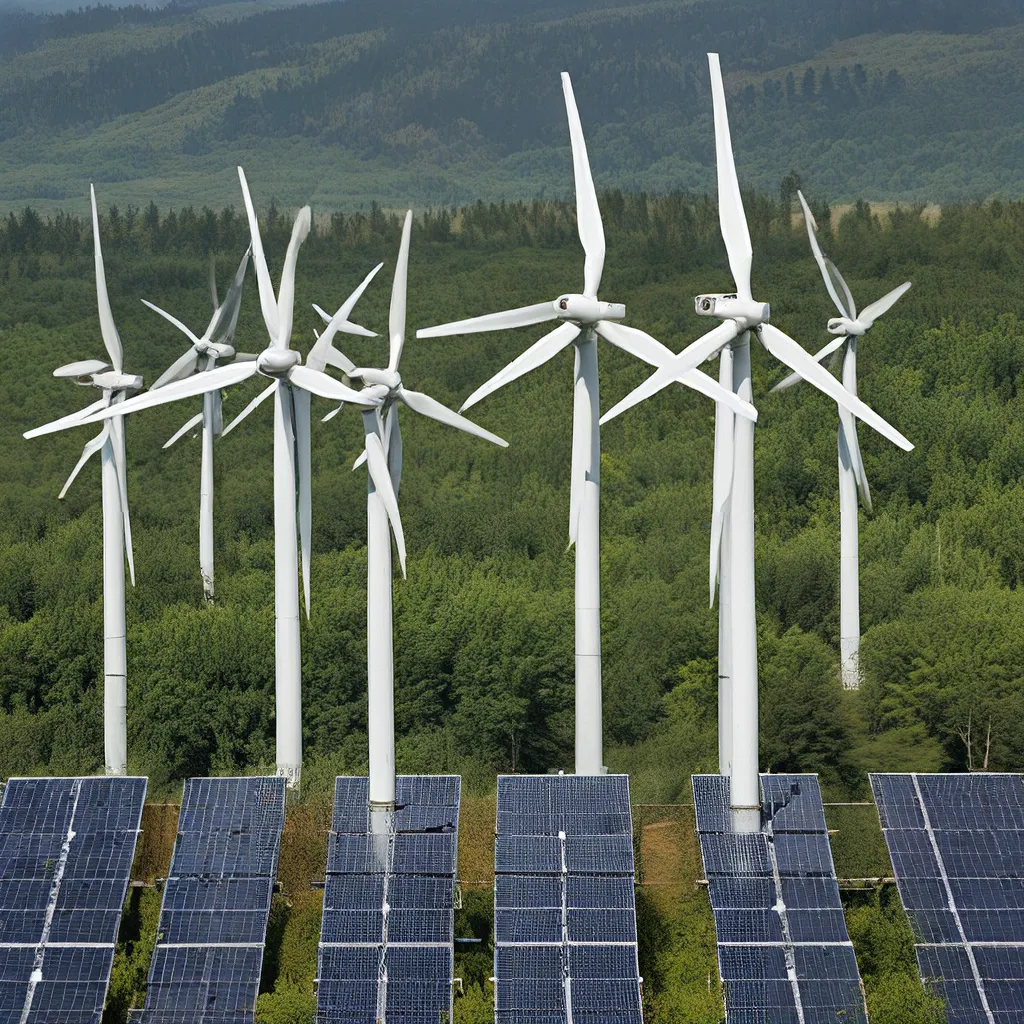
Ah, the quest for carbon neutrality – a lofty goal that’s been on the minds of environmentalists, policymakers, and concerned citizens alike. But let me tell you, my friends, the path to net-zero emissions isn’t a walk in the park. It’s more like a treacherous hike through a dense, uncharted forest, with obstacles and challenges around every turn.
The Urgent Call for Action
As I sit here, sipping my fair-trade, organic coffee (gotta keep my energy up, you know), I can’t help but feel a sense of both excitement and trepidation. The world is facing a climate crisis of unprecedented proportions, and we need to act fast. The State of California has just released its ambitious plan to achieve carbon neutrality by 2045 – a feat that would be a world-first. And let me tell you, it’s a game-changer.
You see, the California plan isn’t just about reducing emissions; it’s about transforming our entire way of life. It’s about transitioning to renewable energy, revamping our transportation systems, and rethinking the way we build and power our homes and businesses. It’s a daunting task, to be sure, but one that’s absolutely essential if we want to leave a livable planet for future generations.
Renewable Energy: The Cornerstone of Carbon Neutrality
Now, let’s talk about renewable energy – the backbone of this whole carbon neutrality thing. I mean, let’s be honest, we can’t just keep burning fossil fuels like there’s no tomorrow. That’s like trying to fuel a rocket ship with a box of matches and a few rubber bands. It just ain’t gonna work.
The European Union has set its sights on becoming the world’s first climate-neutral continent by 2050, and they’re doing it by investing heavily in renewable energy sources like solar, wind, and hydropower. And you know what? It’s working! These renewable energy sources are not only cleaner and more sustainable, but they’re also becoming more affordable and accessible than ever before.
But it’s not just the big players like the EU and California that are making strides. Companies like Amazon are also leading the charge, committing to reach net-zero carbon emissions by 2040. They’re not just talking the talk, either – they’re investing in renewable energy projects, upgrading their transportation fleets, and implementing energy-efficient practices in their buildings and facilities. And let me tell you, if a behemoth like Amazon can do it, then the rest of us have no excuse.
Tackling the Transportation Sector
Now, let’s talk about transportation – the pesky little sector that’s been holding us back for far too long. I mean, come on, how many times have you sat in gridlock traffic, watching exhaust fumes billow from the cars around you, and thought, “There’s got to be a better way”?
Well, my friends, the future is electric. Electric vehicles (EVs), cargo e-bikes, and even on-foot deliveries are all part of the solution. And let me tell you, these technologies are not just environmentally friendly, but they’re also pretty darn cool. Imagine zooming around town in a sleek, silent EV, leaving those gas-guzzling dinosaurs in the dust.
But it’s not just about the vehicles themselves. We need to rethink the entire transportation infrastructure to make it more sustainable. That means investing in public transit, bike lanes, and pedestrian-friendly urban design. Because let’s be real, the more options we have for getting around that don’t involve burning fossil fuels, the better.
Revolutionizing our Built Environment
Now, let’s talk about something a little closer to home – our buildings and homes. I don’t know about you, but I’m tired of living in energy-guzzling, carbon-belching monstrosities. It’s time to take a page out of the California Scoping Plan’s playbook and start making our built environment more efficient and sustainable.
Think about it – we spend the majority of our lives inside buildings, so why not make them work for us instead of against us? Energy-efficient appliances, smart home technology, and innovative building materials are all part of the solution. And let’s not forget the power of renewable energy sources like solar panels and geothermal systems to power our homes and businesses.
But it’s not just about the technology; it’s also about the way we design and construct our buildings. Passive solar design, green roofs, and urban forestry are all strategies that can help us reduce our energy consumption and carbon footprint.
A Just Transition for All
As we embark on this journey towards carbon neutrality, it’s crucial that we remember one thing: this transition must be fair and equitable for everyone. We can’t just focus on the big picture and leave the most vulnerable communities behind.
That’s why it’s so important that the California Scoping Plan and other similar initiatives prioritize environmental justice and community engagement. We need to make sure that the benefits of this transition are distributed equally, and that no one is left to bear the brunt of the burden.
It’s a tall order, to be sure, but I believe that if we work together, we can make it happen. Partnerships between government, industry, and community organizations will be key, as will investment in education, job training, and economic development to ensure that everyone has a stake in the game.
A Greener, More Sustainable Future
As I sit here, reflecting on the challenge ahead, I can’t help but feel a sense of both trepidation and excitement. The road to net-zero emissions is a long and winding one, but I believe that with the right strategies, the right technologies, and the right mindset, we can get there.
So, my friends, let’s roll up our sleeves and get to work. Let’s embrace renewable energy, revolutionize our transportation and built environment, and ensure a just and equitable transition for all. Because at the end of the day, the future of our planet is in our hands, and we can’t afford to let it slip through our fingers.
Who’s with me? Let’s go plug in and save some energy!